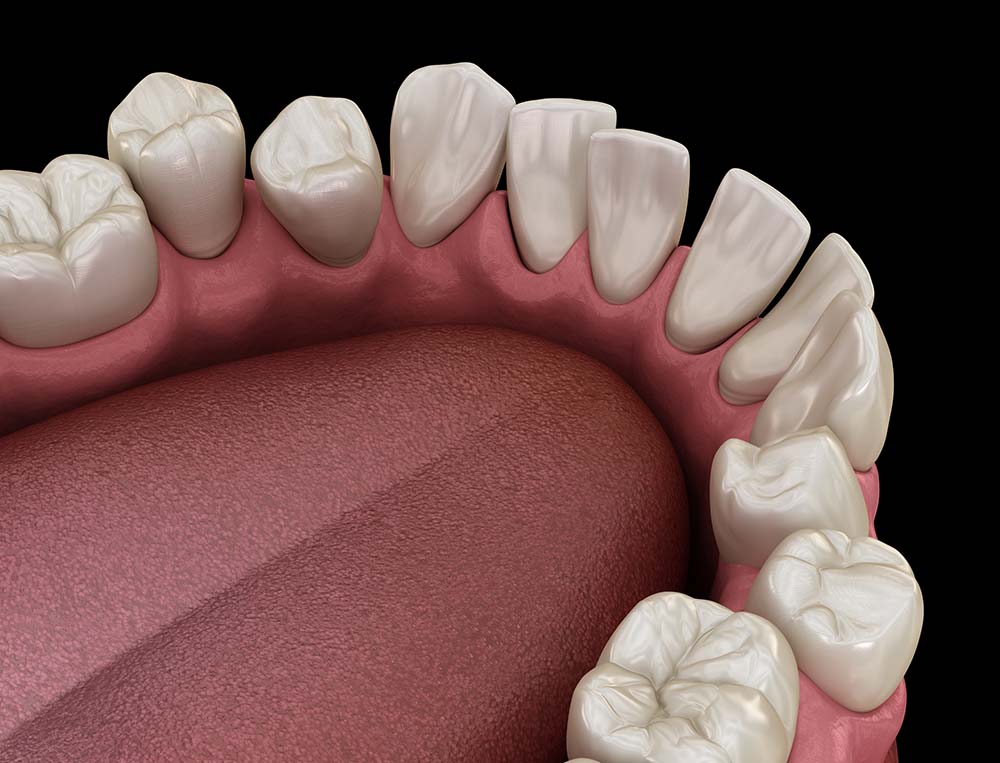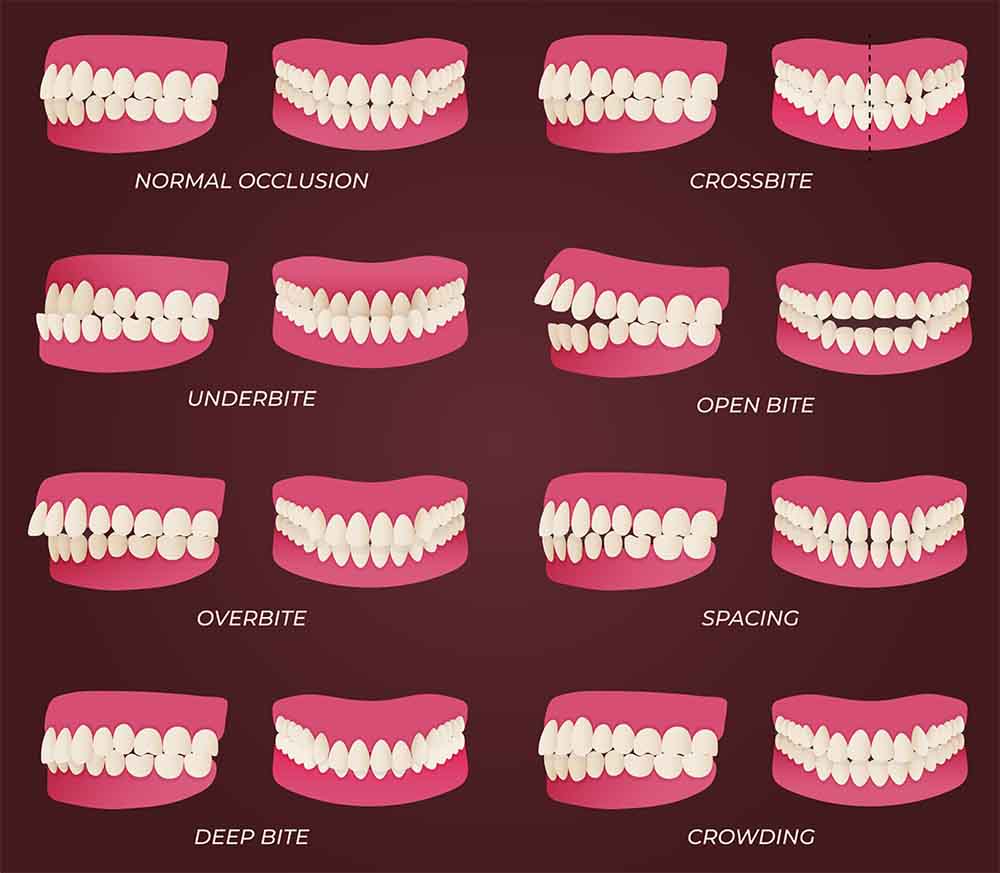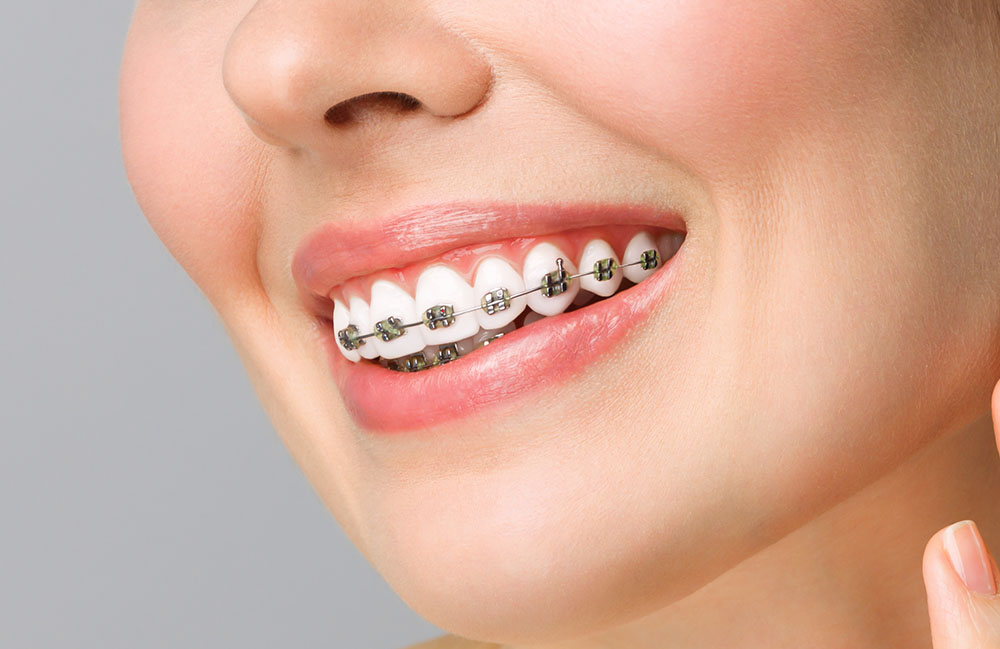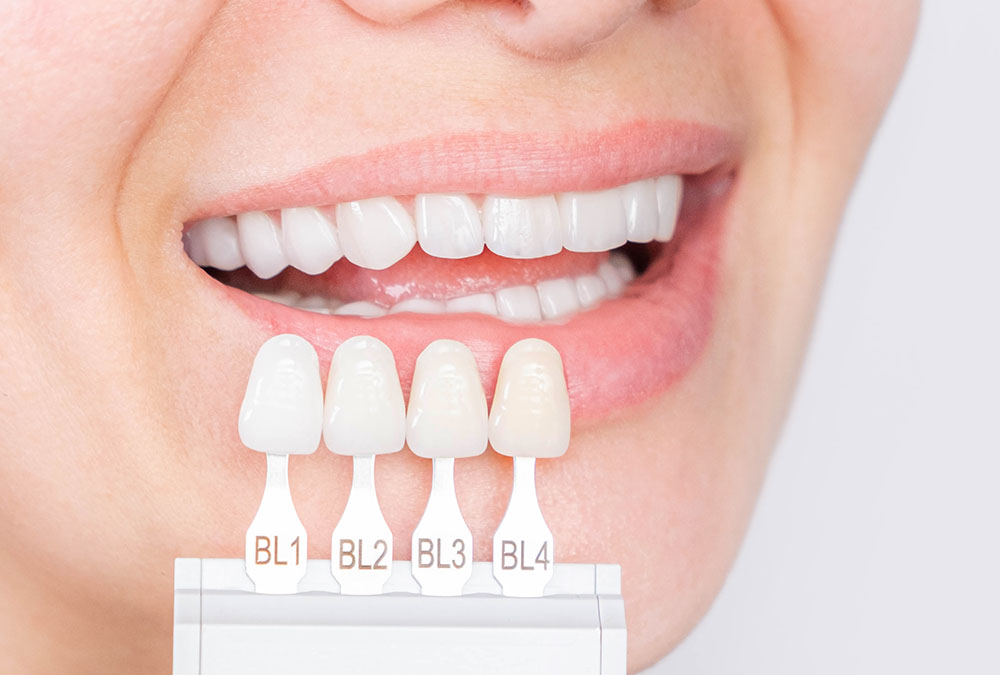
The author of the article
Boris Lipovetskiy, DMD, 31 years experience
A radiant smile is always noticeable, and it’s safe to say that everyone wants to smile confidently. However, not everyone's teeth are naturally straight. Crooked teeth can impact the aesthetics of a smile, as well as the bite and function of the lower jaw, causing joint pain.
What can be done if your crooked teeth are hindering a fulfilling life? How can they be treated? Which specialist should you consult, and what methods might they use? We'll explore further, examining the causes and types of misalignment. We'll discuss how to achieve a beautiful, healthy smile.
In this article, we discuss the following:
What are crooked teeth?
Crooked teeth are teeth that are not properly aligned in the mouth. This misalignment can manifest in various ways and degrees of severity. For instance, if parents had crooked teeth, the likelihood of passing this trait to their offspring is high. Additionally, the loss of a tooth can lead to the shifting of adjacent teeth, which can also result in a bite defect. Here's a general description of the process:
- Initial Eruption. When teeth first erupt, they may come in at odd angles due to limited space in the jaw or interference from other teeth. Baby primary teeth that are lost too early or too late can affect the way permanent come in.
- Growth and Development. As a child grows, their jaw also grows. Sometimes, the jaw may not grow large enough to accommodate all the teeth comfortably, leading to crowding. In other cases, the jaw might grow unevenly, resulting in an overbite or underbite where the upper and lower teeth don’t line up correctly.
- Alignment Shifts. Even after all permanent teeth have erupted, they can still shift position over time. This can be due to pressure from other teeth, habitual actions like thumb-sucking in childhood, or simply natural changes as one ages.
- Period of Stabilization. Usually, by late adolescence or early adulthood, the positions of the teeth and jaw have stabilized. However, without corrective orthodontic treatment, the crookedness or misalignment present will likely remain.

Types of Crooked Teeth
This condition occurs when the roots are too close together in the dental arch, often accompanied by abnormal rotations of individual teeth or their displacement from the alignment. This can complicate standard oral hygiene practices.
These are two types of interdental spaces. A diastema is a small gap between the upper front teeth. A gap, or tremma, can occur between various teeth in either the upper or lower jaw. Both conditions significantly affect the attractiveness of a smile and can cause difficulty pronouncing certain sounds or syllables.
This condition happens when the upper teeth do not align properly with the lower ones, or when one arch are positioned ahead/behind of the other. A horizontal bite defect creates difficulties in chewing and cosmetic concerns, increasing the risk of cavities and gum diseases.
A type of malocclusion where the upper teeth protrude over the lower, creating a gap between the upper and lower front teeth when the jaws are closed. This can lead to enamel wear and additional pressure on the jaw joints.
An abnormal bite where the lower front teeth protrude ahead of the upper arch. This pathology causes difficulties with certain sounds, and fully closing the mouth.
A condition where the upper and lower teeth do not normally touch when the jaw is closed, leading to difficulties in chewing and swallowing food, and causing improper facial proportions.
A condition where the central line of the upper and lower teeth does not match, causing to shift towards one side of the face. This can create asymmetry and disharmony in the smile, leading to improper biting and difficulties in chewing.

Why Have Teeth Become Crooked?
-
Trauma
Can cause various changes in the condition and positioning of teeth. For instance, a blow or fall can lead to broken teeth, displacement towards adjacent, upward movement, or slight rotation. Sometimes, trauma can damage the roots and cause gum problems.
-
Bruxism
This involuntary contraction of the chewing muscles, usually during sleep, leads to strong jaw clenching and teeth grinding. This results in enamel wear, cracks, and a reduction in tooth length, giving teeth an uneven appearance.
-
Periodontal Disease
Gum inflammation and gradual destruction of the ligaments holding the root can lead to exposure, making teeth mobile and altering their position.
-
Wisdom Teeth
Often, there isn't enough space in the dental arch for wisdom teeth, especially in the lower jaw. The eruption of these wisdom can deform adjacent teeth. If not removed in time, they can cause crowding in the front part of the dental arch, leading to the rotation and partial overlapping of incisors/canines.
-
Genetic Factors
The shape and positioning of teeth or the relationship of the jaws can be inherited from parents. If one or both parents have significant bite problems, their child may also face similar pathologies.
-
Early or Late Replacement of Baby Teeth
If a baby tooth is lost too early due to decay or trauma, adjacent teeth gradually shift towards the gap. This can leave insufficient space for the permanent teeth, causing them to erupt improperly.
-
Nasopharyngeal Diseases
Nasal polyps or allergic rhinitis, experienced in childhood, can cause teeth irregularities. It disrupts nasal breathing, leading to mouth breathing and altered alignment of dental arches.
-
Harmful Childhood Habits
Thumb-sucking, prolonged use of pacifiers, and similar actions can influence the formation of the bite and the positioning of a child’s teeth.

Best Way to Fix Crooked Teeth
Boris Lipovetskiy
Dentist with 30 years of experience
Correcting crooked teeth not only improves the aesthetics of your smile but also plays a crucial role in the overall health of your mouth and body. The best way to fix crooked teeth is to consult a cosmetic dentist.
If crooked teeth are not corrected, the situation can worsen:
- Additional pressure on teeth and jaws leads to pain and discomfort in the joints.
- Difficulties in daily cleaning increase the risk of developing cavities, periodontitis, and other oral diseases.
- Pronunciation of some sounds may be affected, leading to speech problems.
- Uneven wear of teeth may occur, necessitating their treatment and restoration.
- Difficulties in chewing can lead to dietary restrictions and poor digestion.
- Self-esteem may suffer, leading to complexes.
Why Consult a Cosmetic Dentist?
- The dentist offers aesthetically pleasing and effective correction methods.
- They conduct a thorough assessment and develop a personalized treatment plan.
- Equipped with modern technologies, they are skilled in creating beautiful smiles.
Ways to Correct Crooked Teeth
During a consultation, the dentist, taking into account the specifics of the individual case, suggests methods for correcting crooked teeth. They thoroughly explain the advantages of each method and answer all questions. Then they select the most effective approach for the patient.
Braces are orthodontic devices used to correct the position of teeth and bite alignment. Brackets are attached to the tooth surface, and an orthodontic wire is connected to them.

Features:
- There are metal and ceramic designs. There are also traditional braces (installed on the outside of the teeth) and lingual braces (installed on the side facing the tongue).
- Connected by metal wires, they create constant pressure on the teeth, gradually moving them into the desired position.
- Metal braces are less aesthetic and can cause allergic reactions to the material.
- Dietary restrictions are necessary, as some foods can damage the structures or get stuck in them.
- Daily cleaning of teeth and braces from plaque and food remnants helps prevent cavities. Special brushes and floss are available for cleaning between them.
- A common and effective method for correcting complex orthodontic problems.
- Treatment takes 1-2 years. Regular visits to the dentist for adjustments and monitoring every 1-2 months are required.
Invisalign Aligners for Crooked Teeth – are removable, transparent orthodontic devices used for correcting the position of teeth and bite alignment without traditional braces.

Features:
- Made from clear plastic, making them virtually invisible while worn.
- The material of the aligners is soft and comfortable for the gums, without sharp brackets or wires, reducing the risk of irritation.
- Patients can preview their post-treatment teeth appearance thanks to 3D scanning and virtual modeling.
- Custom-made from individual dental impressions, patients receive a series of aligners. Each aligner is worn for two weeks before moving on to the next one.
- Regular changing of aligners according to the treatment plan ensures continuous pressure and gradual movement into the correct position.
- Aligners cover the entire length of the tooth – providing uniform impact on the smile and roots.
- The aligners are removable, simplifying oral hygiene and eating. Patients can take them off for meals and enamel cleaning.
- Used for correcting orthodontic issues of mild to moderate severity.
- The treatment typically lasts about a year to a year and a half, with dentist visits every 2-3 months for monitoring.
Porcelain veneers for front teeth – are thin shells attached to enhance aesthetics. They withstand significant loads and resemble natural enamel, used to mask cosmetic defects.

Features:
- The installation of veneers requires two or three visits to the dentist. The dentist conducts a consultation, removes a small layer of enamel from the teeth, and takes a digital impression to create the veneers. Once fabricated in the laboratory, the finished structures are cemented onto the flawed teeth.
- Custom-made for each patient, they achieve a natural look, considering the shape, size, and color of enamel.
- High aesthetic value – the ceramic veneers mimics the natural color and sheen of teeth. They are resistant to pigmentation and maintain their color for over 10 years.
- Not effective for solving serious orthodontic problems. They improve the appearance of teeth but do not change their position.
- The process of placing veneers is faster compared to other corrective methods. Suitable for those seeking quick aesthetic enhancement.
- Care for porcelain veneers is similar to caring for natural teeth. Regular cleaning and dental check-ups will keep them in good condition.
How can you fix crooked teeth at home?
To straighten crooked teeth, it's best to consult with a qualified specialist, such as a cosmetic dentist. They will offer appropriate, tested, and safe correction methods for your specific case.
- Maintain a healthy diet that supports oral health. Avoid hard, sticky, or sugary foods that can damage braces or aligners if you're undergoing orthodontic treatment.
- If you are undergoing orthodontic treatment like wearing aligners or retainers, ensure strict adherence to the usage guidelines provided by your dentist or orthodontist.
- Maintain excellent oral hygiene, especially if you have braces, to prevent tooth decay and gum disease. Brushing and flossing around wires and brackets can be challenging, but it's crucial.
- Use tools like interdental brushes, floss threaders, and water flossers to keep teeth and gums clean around orthodontic appliances.
- Keep up with regular dental appointments to monitor the progress of your treatment and make necessary adjustments.
- Assess Overall Health. Sometimes, issues like tooth grinding (bruxism) can affect dental alignment. Addressing overall health concerns can indirectly contribute to the success of orthodontic treatments.
It is not recommended to straighten your teeth with radical methods at home. Applying force or using makeshift devices can lead to tooth damage or gum injury. The use of corrective orthodontic aligners at home is acceptable, but only after consulting with a dentist.
Case Study of Crooked Teeth Treatment
Dr. Boris Lipovetskiy, a dentist in Fort Lauderdale, treated a man with crooked teeth.
The patient came to the clinic with complaints of worn teeth, changes in the shape and inclination of the incisors. After a thorough clinical examination, the doctor prescribed comprehensive treatment to restore the functionality and aesthetics of the smile. He performed oral sanitation, prosthetics, and a complete reconstruction of the mouth, correcting the bite. After completing the treatment, the patient's teeth became straight and pearly white. He feels confident and satisfied with the results.

Testimonials
«Dr. Boris is a true professional. I like his approach to dentistry. Highly recommend, the staff is wonderful, you won't be disappointed.»
Jimmy Tyrrell
«The office and services are excellent. Dr. Boris now offers more services in the dental office. The entire staff is friendly, professional, efficient! We have been going to the office for over 10 years, have experienced almost all their services (cleaning/maintenance, implants, sleep study, Invisalign). Very satisfied with everything they do.»
Linda Carlson
FAQs
Some people prefer to keep the natural character of their smile, even if their teeth aren't perfectly straight. Or, if the crookedness doesn't affect their bite, speech, and doesn’t cause pain, one might choose not to correct the aesthetic flaw. However, doctors recommend straightening teeth, as there's a risk of complications (gum disease, cavities, increased wear, digestive system issues).


